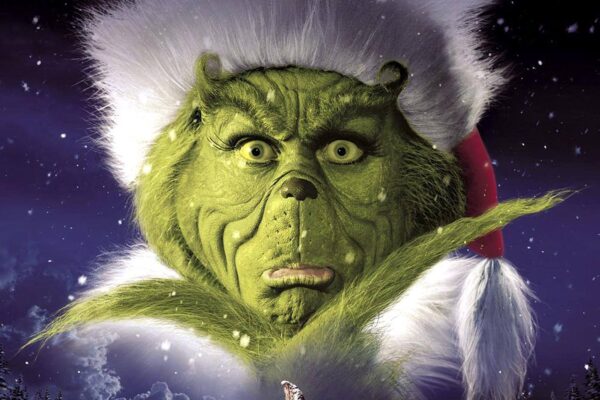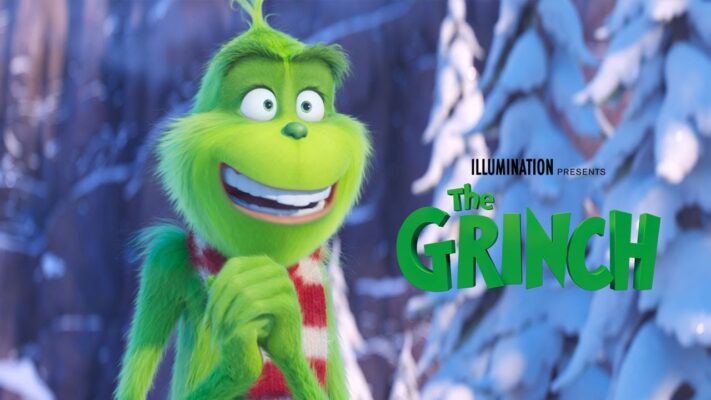Movie News
What Do The Grinch Look Like?
The Grinch is one of the most recognizable characters in holiday literature, television, and film. From his green fur to his trademark sneer, he is an unforgettable figure synonymous with Christmas. But what do the Grinch look like, exactly? From his first appearance in Dr. Seuss’s “How the Grinch Stole Christmas!” to his portrayal in various adaptations, the Grinch’s appearance has remained iconic while evolving across different media. Let’s Alibaytoon explore the distinctive physical traits of the Grinch, how they have changed over time, and what makes this character so visually unique.

What Do The Grinch Look Like? The Grinch in Dr. Seuss’s Original Illustration
When Dr. Seuss, also known as Theodor Seuss Geisel, first introduced the Grinch in his 1957 book “How the Grinch Stole Christmas!”, the character’s visual design reflected Seuss’s signature illustrative style. In the original book, the Grinch is depicted as a lanky, green-furred creature with a sinister, elongated grin. His spindly limbs and wiry frame give him a somewhat skeletal appearance, enhancing his portrayal as a figure of villainy. He is dressed in a red Santa Claus suit, but instead of embodying the joy and warmth of Christmas, his facial expressions and body language convey bitterness, malice, and disdain.
Green Fur and Long, Thin Body
One of the most distinctive features of the Grinch is his bright green fur. While early black-and-white illustrations didn’t emphasize this trait, the Grinch’s fur became iconic in colorized versions of the story and subsequent adaptations. His green color contrasts sharply with the red of his Santa suit, symbolizing his opposition to the cheerful spirit of Christmas. The decision to make him green is believed to have been influenced by a desire to make the character stand out as an anti-hero, a visual foil to the bright, colorful festivities of the Whos in Whoville.

The Grinch’s long, thin body adds to his creepy, almost otherworldly presence. His exaggerated limbs, particularly his arms and fingers, are often depicted in twisted, curling positions that suggest his scheming nature. His spindly build also makes him appear less human and more like a strange, mysterious creature, reinforcing his status as an outsider.
The Grinch’s Trademark Sneer
Perhaps the most recognizable feature of the Grinch is his face, particularly his mischievous sneer. His expression is a perfect blend of menace and cunning, with his eyes narrowed in plotting malice. The Grinch’s grin, which curves upwards into a sharp, almost snake-like smile, has become one of the most iconic images in holiday literature. His exaggerated facial expressions allow the Grinch to convey a wide range of emotions, from irritation and anger to satisfaction and glee when he believes he has succeeded in stealing Christmas.
In Seuss’s illustrations, the Grinch’s face is characterized by sharp lines and angular features, making him appear more sinister and conniving. His eyes often gleam with malicious intent, and his overall facial design reinforces the idea that he is a character to be feared, yet also one with a sense of humor.
The Grinch in the 1966 Animated Special
The 1966 animated television special, “How the Grinch Stole Christmas!”, directed by Chuck Jones, brought the Grinch to life in a new and dynamic way. In this adaptation, the Grinch’s appearance remained largely faithful to Dr. Seuss’s original illustration, but Jones added his own stylistic flair, making the character even more expressive and memorable.
Vibrant Green and Enhanced Facial Expressions
In the animated special, the Grinch’s green fur is even more vibrant, emphasizing his role as a character who stands out from the rest of Whoville. Chuck Jones’s animation style gave the Grinch more fluid and exaggerated movements, which helped bring out his personality even further. His long, thin limbs were accentuated in the animation, making his every motion appear deliberate and mischievous.

The Grinch’s face in the animated special is particularly notable. Jones’s animation allowed for more dynamic facial expressions, giving the Grinch an almost elastic quality. His infamous sneer is more pronounced, stretching across his face with an intensity that conveys both his evil plotting and his eventual change of heart. In the special, his yellow eyes and expressive brow enhance his menacing look, while also allowing moments of vulnerability and transformation when his heart “grows three sizes” at the end of the story.
The Grinch’s Costume
In the animated special, the Grinch’s Santa Claus costume is much more detailed. The red coat and hat, trimmed with white fur, give him the appearance of a twisted version of Santa, intent on ruining Christmas rather than spreading joy. His costume becomes an essential part of his plot to deceive the Whos, but it also adds to the humor of the character—this grumpy, fur-covered creature trying to pass himself off as jolly old St. Nick.
Jim Carrey’s Grinch in the 2000 Live-Action Film
In the year 2000, director Ron Howard released a live-action adaptation of “How the Grinch Stole Christmas!”, with Jim Carrey taking on the role of the Grinch. This film presented a new, more detailed version of the Grinch, one that blended Seuss’s original vision with the needs of live-action storytelling.
A More Human Grinch
In this adaptation, the Grinch’s appearance was made more complex and human-like, thanks to intricate makeup and prosthetics applied to Jim Carrey. His green fur remained a central feature, but this version of the Grinch had a more textured, realistic look. The fur was made to look rough and matted, giving him an even more unkempt and wild appearance, which fit with his characterization as a hermit living on Mount Crumpit.
Carrey’s portrayal of the Grinch leaned heavily into the character’s physicality, and the makeup design allowed for exaggerated facial expressions that were both comical and creepy. The Grinch’s yellow eyes were retained, and his facial features, while more human-like, still had the elongated, sharp qualities that made the animated version so striking.
The Grinch’s Santa Suit and More Detailed Costuming
The 2000 film gave the Grinch’s costume more detail and texture, making his Santa suit appear worn and homemade. The suit itself is tattered, with uneven hems and frayed edges, adding to the character’s rugged, outcast persona. The choice to make the suit appear imperfect reinforces the idea that the Grinch is attempting to blend in with Whoville’s Christmas celebrations, but his outsider status remains evident.
The film also expanded on the Grinch’s backstory, providing insight into his childhood and the reasons behind his hatred for Christmas. This gave the Grinch’s appearance a more layered, nuanced meaning, as his physical transformation over the course of the film mirrored his emotional journey from isolation to acceptance.
The 2018 Animated Grinch
In 2018, Illumination Entertainment released an animated film simply titled “The Grinch,” with Benedict Cumberbatch voicing the character. This modern adaptation reimagined the Grinch’s appearance for a new generation while maintaining many of the iconic traits established by Dr. Seuss and Chuck Jones.
A Softer, More Modern Look
The 2018 Grinch retained the character’s green fur and mischievous expressions, but the animation gave him a softer, more approachable look. His fur was rendered in a smooth, almost fluffy style, making him appear less menacing and more relatable. While the Grinch still sported his signature sneer, his facial features were less angular, and his movements were more subdued compared to previous versions.
The updated design was likely intended to make the Grinch more appealing to younger audiences, while still preserving his role as the ultimate holiday curmudgeon. His Santa suit in this version was also more polished and clean, reflecting the film’s overall modern aesthetic.
The Grinch’s Evolution: A Character that Transcends Generations
Over the years, the Grinch’s appearance has evolved, but his core characteristics have remained consistent. From his green fur to his scheming grin, the Grinch’s physical traits continue to symbolize his role as both an antagonist and a character capable of redemption. Whether portrayed in animated form, live-action, or modern CGI, the Grinch’s visual identity remains a crucial part of his appeal.
The question of what do the Grinch look like has many answers, depending on the version of the story you’re experiencing. Yet, across all interpretations, the Grinch remains an iconic figure who stands for much more than his outward appearance. He is a character who, despite his grumpy exterior, teaches us about the importance of love, community, and the true meaning of Christmas.
Ready to show off your Grinch spirit this holiday season? Get your exclusive The Grinch T-shirts at Alibaytoon Store and embrace the mischievous fun of this iconic character!
